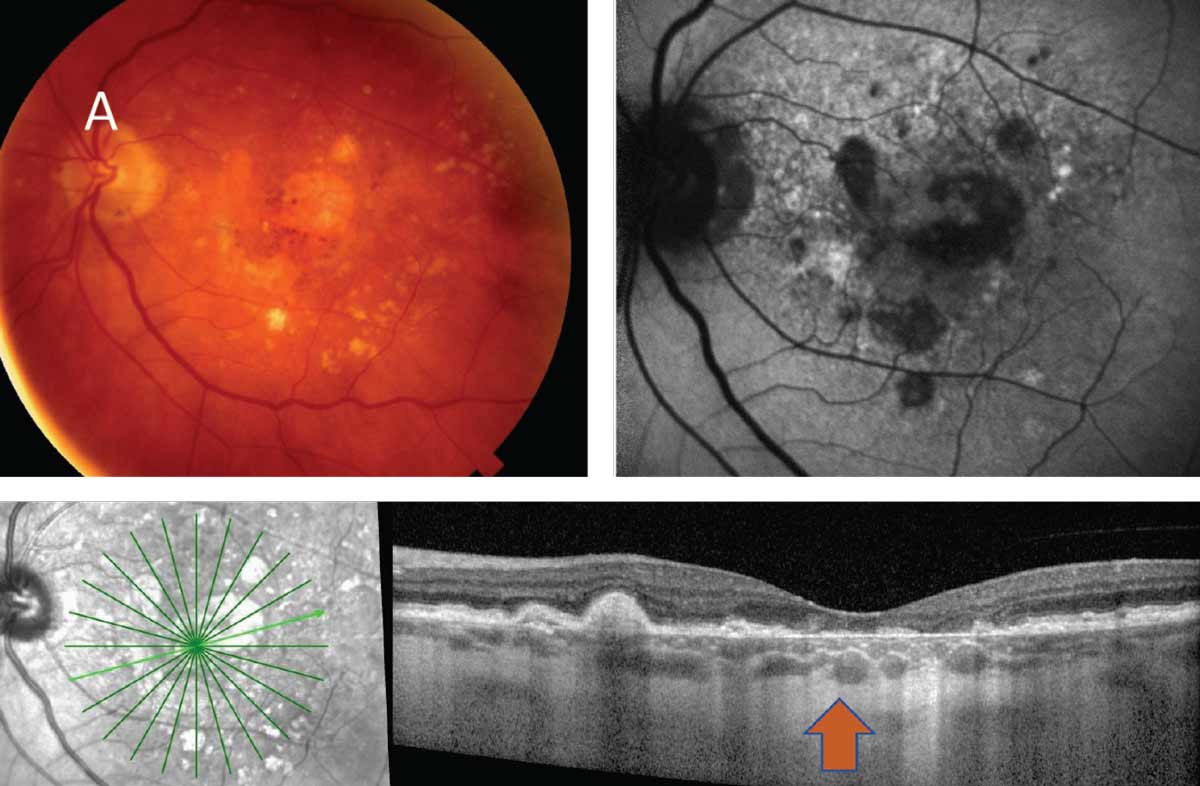 |
|
This study used predictive modeling to learn about nAMD treatment response after the aflibercept loading phase. This secondary analysis of the data identified baseline OCT features that can help explain presenting visual acuity. Photo: Mohammad Rafieetary, OD. Click image to enlarge. |
Vision loss from neovascular age-related macular degeneration (nAMD) is a significant public health burden, particularly among patients with the macular subtype. Recently, researchers were able identify OCT biomarkers that explain deficiencies in baseline visual acuity, which is important since baseline acuity is the most significant determinant of visual outcomes. Their findings, published in Eye, point to a need for earlier disease detection.
The analysis included 2,039 eyes of 1,901 patients with nAMD on aflibercept therapy (mean age 79.4; mean visual acuity 58 letters). The researchers reported that poor baseline visual acuity (less than 54 letters) was associated with several OCT features, including increases in the following:
- central subfield thickness
- foveal intraretinal fluid
- polypoidal vasculopathy relative to type-1 macular neovascularization
- presence of foveal subretinal hyperreflective material
- foveal fibrosis
- foveal atrophy
- loss of integrity of the foveal ellipsoid zone or external limiting membrane relative to preservation
- absence of subretinal drusenoid deposits
Additionally, the researchers found that these features were associated with lower likelihood of visual acuity 68 letters or better, except in patients with macular neovascularization subtypes and subretinal drusenoid deposits.
“Our study reports the baseline OCT features that determine different ranges of baseline visual acuity in exudative nAMD,” the researchers explained in their Eye paper. “As these features form the surrogate for poor visual acuity that eventually determine poor visual acuity outcomes, we recommend early detection of nAMD through screening of second eyes of patients with unilateral nAMD.”
Chandra S, Gurudas S, Burton BJL, et al. Associations of presenting visual acuity with morphological changes on OCT in neovascular age-related macular degenerations: PRECISE Study Report 2. Eye 2023. [Epub October 18, 2023]. |

